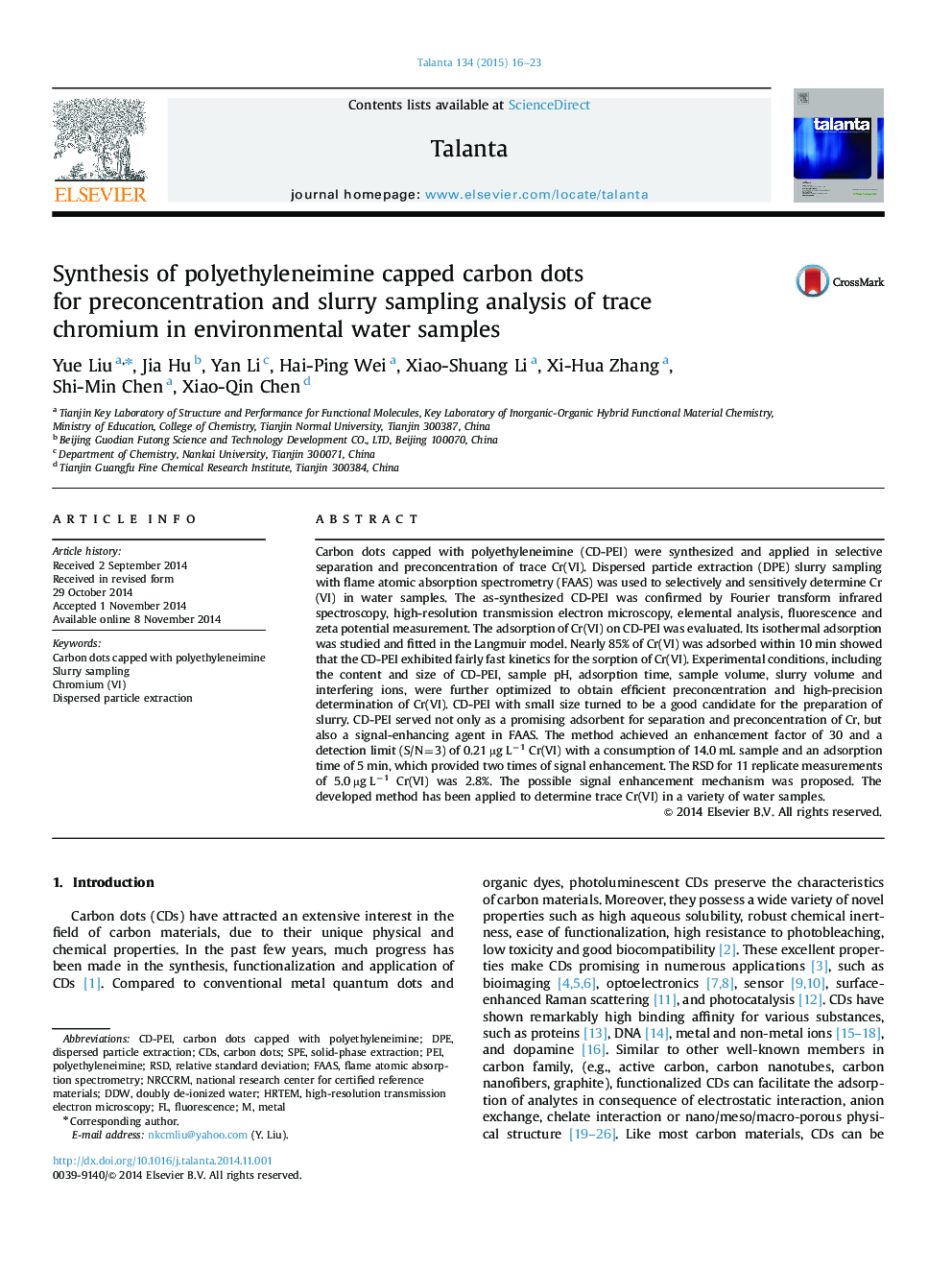| Article ID | Journal | Published Year | Pages | File Type |
|---|---|---|---|---|
| 1244046 | Talanta | 2015 | 8 Pages |
•A new application of carbon dots has been employed for detection of trace Cr(VI).•CD-PEI was proved to be good dispersed particle extraction in adsorption of Cr(VI).•CD-PEI was served as a signal-enhancing agent in FAAS.•The detection limit (3 s) of developed method achieved 0.21 μg L−1.•The method was used to detect trace Cr(VI) in environmental water samples.
Carbon dots capped with polyethyleneimine (CD-PEI) were synthesized and applied in selective separation and preconcentration of trace Cr(VI). Dispersed particle extraction (DPE) slurry sampling with flame atomic absorption spectrometry (FAAS) was used to selectively and sensitively determine Cr(VI) in water samples. The as-synthesized CD-PEI was confirmed by Fourier transform infrared spectroscopy, high-resolution transmission electron microscopy, elemental analysis, fluorescence and zeta potential measurement. The adsorption of Cr(VI) on CD-PEI was evaluated. Its isothermal adsorption was studied and fitted in the Langmuir model. Nearly 85% of Cr(VI) was adsorbed within 10 min showed that the CD-PEI exhibited fairly fast kinetics for the sorption of Cr(VI). Experimental conditions, including the content and size of CD-PEI, sample pH, adsorption time, sample volume, slurry volume and interfering ions, were further optimized to obtain efficient preconcentration and high-precision determination of Cr(VI). CD-PEI with small size turned to be a good candidate for the preparation of slurry. CD-PEI served not only as a promising adsorbent for separation and preconcentration of Cr, but also a signal-enhancing agent in FAAS. The method achieved an enhancement factor of 30 and a detection limit (S/N=3) of 0.21 µg L−1 Cr(VI) with a consumption of 14.0 mL sample and an adsorption time of 5 min, which provided two times of signal enhancement. The RSD for 11 replicate measurements of 5.0 µg L−1 Cr(VI) was 2.8%. The possible signal enhancement mechanism was proposed. The developed method has been applied to determine trace Cr(VI) in a variety of water samples.
Graphical abstractFigure optionsDownload full-size imageDownload as PowerPoint slide
